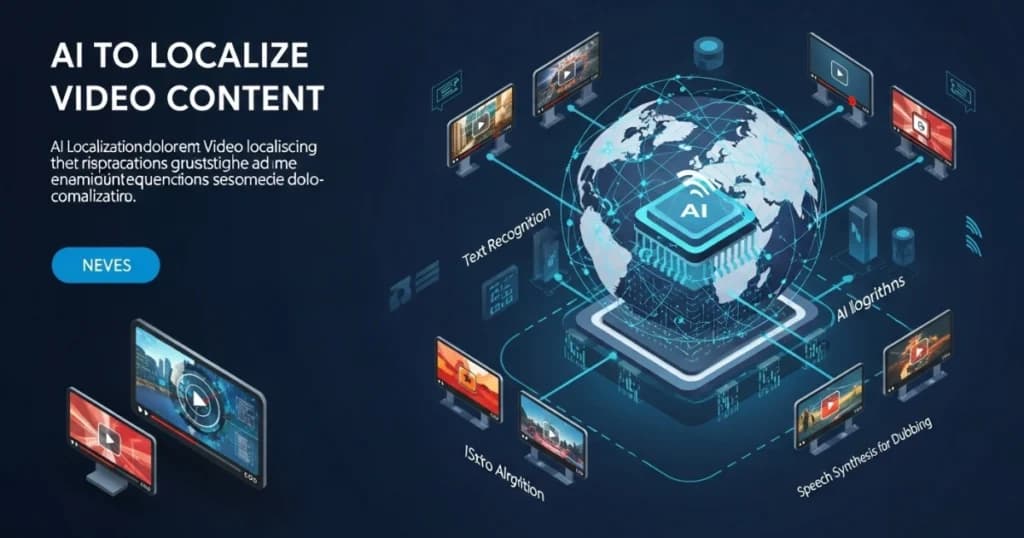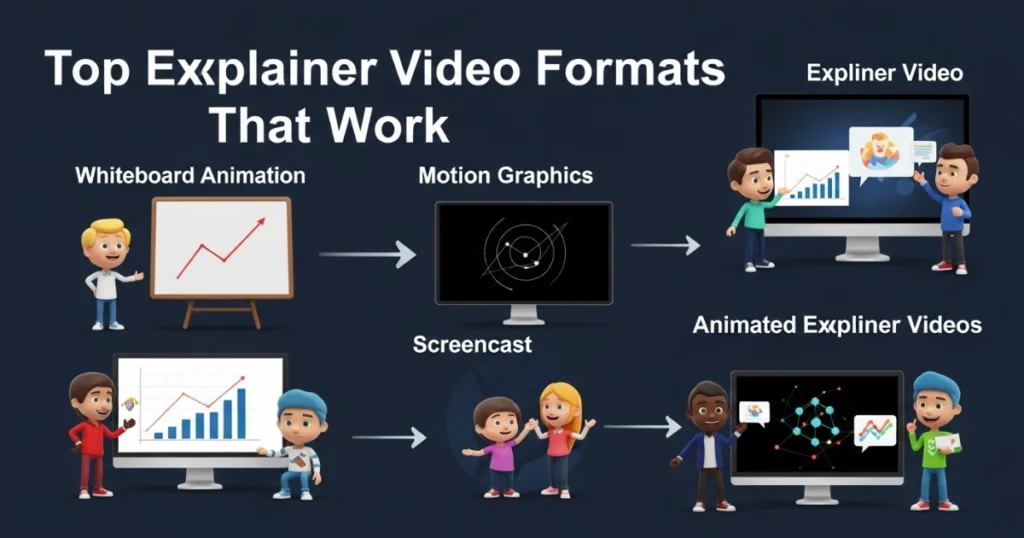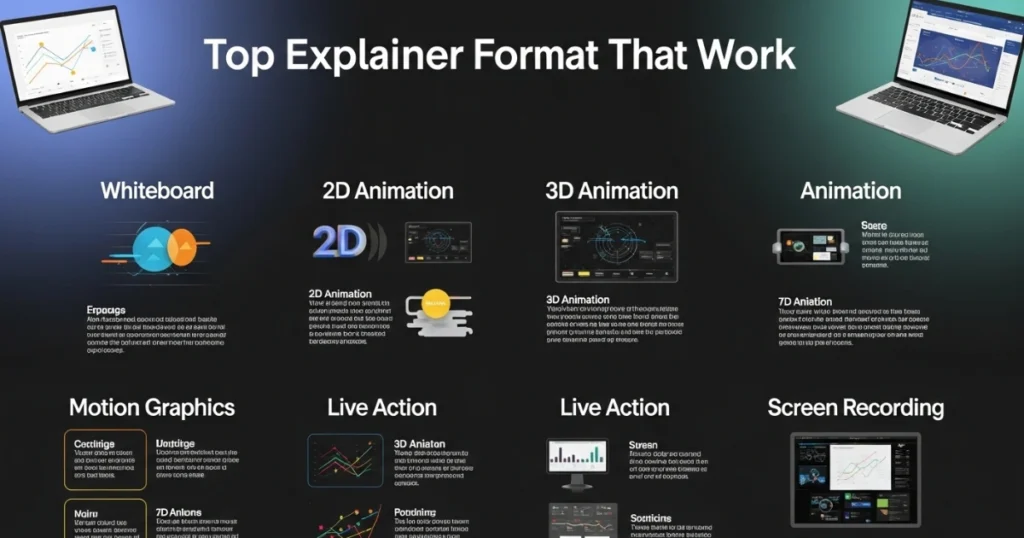
AI Videos
Explainer Video Formats That Work: Boost Engagement in 2025

Contents
- 1 Why Explainer Videos Matter in 2025
- 2 Key Elements of Successful Explainer Videos
- 3 Top Explainer Video Formats That Work
- 4 Choosing the Right Format for Your Goals
- 5 Trends Shaping Explainer Videos in 2025
- 6 How to Optimize Explainer Videos for SEO
- 7 Measuring the Success of Your Explainer Videos
- 8 Common Mistakes to Avoid
Explainer video formats that work are essential tools for businesses aiming to capture attention and convey messages effectively in 2025. With shrinking attention spans and fierce online competition, these videos offer a dynamic way to simplify complex ideas, showcase products, or introduce services. Moreover, they engage audiences across platforms like websites, social media, and email campaigns. This article explores the most effective explainer video formats, their unique strengths, and how to maximize their impact. Whether you’re a marketer, entrepreneur, or content creator, understanding these formats will help you craft compelling videos that resonate with your audience.
Why Explainer Videos Matter in 2025
Explainer videos remain a cornerstone of digital marketing because they combine visuals, audio, and storytelling to deliver messages quickly. According to recent studies, videos can increase conversion rates by up to 80%. Additionally, 85% of consumers are more likely to purchase after watching a product video. These statistics highlight why businesses prioritize explainer videos to build trust and drive action.
Furthermore, explainer videos are versatile. They work for startups introducing innovative products, e-commerce brands showcasing features, or educators simplifying concepts. By leveraging the right format, you can tailor your message to your audience’s preferences, ensuring maximum engagement.
Key Elements of Successful Explainer Videos
Before diving into specific formats, let’s outline the core components that make explainer videos effective:
- Clear Objective: Define the video’s purpose—whether it’s educating, selling, or building brand awareness.
- Concise Script: Keep it short, ideally under 90 seconds, to maintain viewer attention.
- Strong Visuals: Use high-quality graphics or footage to enhance understanding.
- Engaging Voiceover: A professional voiceover adds credibility and clarity.
- Call to Action (CTA): End with a clear, actionable step to guide viewers.
By incorporating these elements, you ensure your explainer video formats resonate with viewers and achieve your goals.
Top Explainer Video Formats That Work
Here, we explore the most effective explainer video formats that work in 2025. Each format offers unique benefits, making it suitable for specific goals and audiences.

1. Animated Explainer Videos
Animated explainer videos are among the most popular formats due to their versatility and visual appeal. These videos use animated characters, graphics, and motion to explain concepts in a fun, engaging way. For example, a SaaS company might use animation to demonstrate how their software streamlines workflows.
Why It Works: Animation simplifies complex ideas, making them accessible to diverse audiences. Plus, it allows creative freedom to craft unique visuals that align with your brand. According to Wyzowl, 81% of businesses using video marketing prefer animated formats for their flexibility.
Best Use Cases:
- Explaining abstract concepts like blockchain or AI.
- Engaging younger audiences with vibrant visuals.
- Creating brand consistency with custom characters.
Tips for Success:
- Use bold colors and clean designs to grab attention.
- Keep animations smooth to avoid distracting viewers.
- Pair with a conversational voiceover for relatability.
2. Whiteboard Animation Videos
Whiteboard animation videos feature hand-drawn illustrations that appear on a virtual whiteboard as a narrator explains the content. This format mimics a classroom setting, making it ideal for educational content.
Why It Works: The hand-drawing effect captivates viewers by showing the story unfold in real-time. Additionally, its simplicity keeps production costs low while maintaining engagement. Research shows whiteboard videos can increase retention rates by 15%.
Best Use Cases:
- Breaking down technical processes, like software tutorials.
- Educating audiences in e-learning platforms.
- Simplifying financial or legal concepts.
Tips for Success:
- Focus on a clear narrative to guide the drawings.
- Use minimal colors to maintain a clean aesthetic.
- Keep videos under two minutes for maximum impact.
3. Live-Action Explainer Videos
Live-action explainer videos feature real people, settings, and props to tell a story. For instance, a fitness brand might showcase a trainer demonstrating equipment in a gym.
Why It Works: Live-action videos feel authentic and relatable, fostering trust. They’re particularly effective for brands selling physical products or services requiring human interaction. Studies indicate that 79% of consumers prefer live-action for product demos.
Best Use Cases:
- Showcasing tangible products like gadgets or apparel.
- Highlighting company culture or team introductions.
- Demonstrating services like consulting or coaching.
Tips for Success:
- Invest in high-quality lighting and sound for professionalism.
- Use real customers or employees to build authenticity.
- Include subtitles for accessibility across platforms.
4. Motion Graphics Explainer Videos
Motion graphics videos combine text, icons, and animated visuals to create sleekexplainers. These are ideal for tech companies or startups needing a modern, polished look.
Why It Works: Motion graphics are visually striking and convey information quickly. They’re perfect for data-heavy content, as they can transform stats into engaging visuals. For example, a fintech company might use motion graphics to explain investment trends.
Best Use Cases:
- Presenting data or statistics in an engaging way.
- Explaining tech products with a futuristic vibe.
- Creating ads for social media platforms like Instagram.
Tips for Success:
- Use consistent branding elements like logos and colors.
- Keep transitions smooth to maintain viewer focus.
- Highlight key points with animated text or icons.
5. Screencast Explainer Videos
Screencast videos record a computer screen to demonstrate software, apps, or websites. They often include voiceovers or annotations to guide viewers.
Why It Works: Screencasts are cost-effective and highly specific, making them ideal for tech tutorials. They allow viewers to see exactly how a tool works, increasing trust and clarity. Data shows screencast tutorials can reduce customer support queries by 30%.
Best Use Cases:
- Guiding users through software or app interfaces.
- Creating how-to guides for online tools.
- Training employees on internal systems.
Tips for Success:
- Use zoom-ins to highlight key features.
- Include clear annotations or arrows to guide viewers.
- Keep the pace steady to avoid overwhelming users.
6. 3D Animation Explainer Videos
3D animation videos use three-dimensional visuals to create immersive, high-impact explainers. These are often used for premium products or complex systems.
Why It Works: 3D animations offer a cinematic feel, making them stand out. They’re ideal for showcasing intricate details, like the inner workings of a machine. However, they require higher budgets and longer production times.
Best Use Cases:
- Demonstrating complex products like medical devices.
- Creating high-end marketing campaigns for luxury brands.
- Visualizing architectural or engineering designs.
Tips for Success:
- Ensure 3D models are high-quality to avoid looking dated.
- Use realistic lighting and textures for authenticity.
- Balance detail with simplicity to avoid overwhelming viewers.
7. Stop-Motion Explainer Videos
Stop-motion videos use physical objects, like paper or clay, moved incrementally to create animation. For example, a food brand might use stop-motion to show ingredients coming together.
Why It Works: Stop-motion offers a unique, tactile feel that stands out in a digital world. It’s quirky and memorable, making it ideal for creative brands. Social media platforms like TikTok amplify their reach due to their novelty.
Best Use Cases:
- Promoting artisanal or handmade products.
- Creating viral content for social media campaigns.
- Engaging audiences with storytelling.
Tips for Success:
- Plan the storyline meticulously to reduce production time.
- Use high-resolution cameras for sharp visuals.
- Keep videos short to maintain viewer interest.
Choosing the Right Format for Your Goals
Selecting the best explainer video format depends on your audience, budget, and objectives. For instance, startups with limited budgets might opt for whiteboard or screencast videos, while established brands may invest in 3D animation for a premium feel. Additionally, consider where your video will appear—social media favors short, bold formats like motion graphics, while websites benefit from live-action or animated explainers.

To choose wisely, ask:
- Who is my target audience, and what visuals resonate with them?
- What is my budget and production timeline?
- Where will the video be shared (e.g., YouTube, Instagram, or website)?
By aligning your format with these factors, you maximize engagement and ROI.
Trends Shaping Explainer Videos in 2025
To ensure your explainer video formats work, stay ahead of these trends:
- Interactive Videos: Allow viewers to click and explore, increasing engagement by 32%, per recent data.
- Personalization: Tailor videos to specific audience segments using AI-driven tools.
- Short-Form Content: Platforms like TikTok demand videos under 60 seconds for maximum reach.
- Sustainability Themes: Highlight eco-friendly practices to connect with conscious consumers.
- AI-Generated Elements: Use AI tools to streamline animation or voiceover production.
By incorporating these trends, your videos will feel fresh and relevant.
How to Optimize Explainer Videos for SEO
To maximize the reach of your explainer video formats, optimize them for search engines:

- Use Keywords: Include “explainer video formats that work” in titles, descriptions, and transcripts. Aim for a 1% keyword density (approximately 30-35 uses in this article).
- Add Transcripts: Provide text transcripts to make videos accessible and crawlable by search engines.
- Optimize Thumbnails: Use eye-catching thumbnails with text overlays to boost click-through rates.
- Host on Multiple Platforms: Upload to YouTube, Vimeo, and your website to increase visibility.
- Include Backlinks: Link to your video from blog posts or social media to drive traffic.
These steps ensure your videos rank higher and attract more viewers.
Measuring the Success of Your Explainer Videos
To confirm your explainer video formats work, track these metrics:
- View Count: Measures initial reach and interest.
- Engagement Rate: Tracks likes, shares, and comments.
- Conversion Rate: Monitors actions like sign-ups or purchases.
- Watch Time: Indicates how long viewers stay engaged.
- Bounce Rate: Shows if viewers leave your site after watching.
Tools like Google Analytics, YouTube Analytics, or Wistia provide detailed insights to refine your strategy.
Common Mistakes to Avoid
Even the best explainer video formats can fail if you make these mistakes:
- Overcomplicating the Message: Keep it simple to avoid confusing viewers.
- Ignoring the Audience: Tailor content to their needs and preferences.
- Skipping the CTA: Always include a clear next step.
- Poor Production Quality: Low-quality visuals or audio can deter viewers.
- Overloading with Information: Stick to one key message per video.
By avoiding these pitfalls, you ensure your videos deliver maximum impact.
Conclusion
Explainer video formats that work in 2025 combine creativity, clarity, and strategy to engage audiences and drive results. Whether you choose animated, live-action, or stop-motion formats, focus on aligning with your audience’s needs and your brand’s goals. By incorporating trends like interactivity and personalization, optimizing for SEO, and tracking performance, you can create videos that captivate and convert. Start experimenting with these formats today to elevate your marketing and connect with viewers like never before.


How Creators Use AI Reels to Sell: Tips & Strategies
Updated on July 30, 2025
Read More